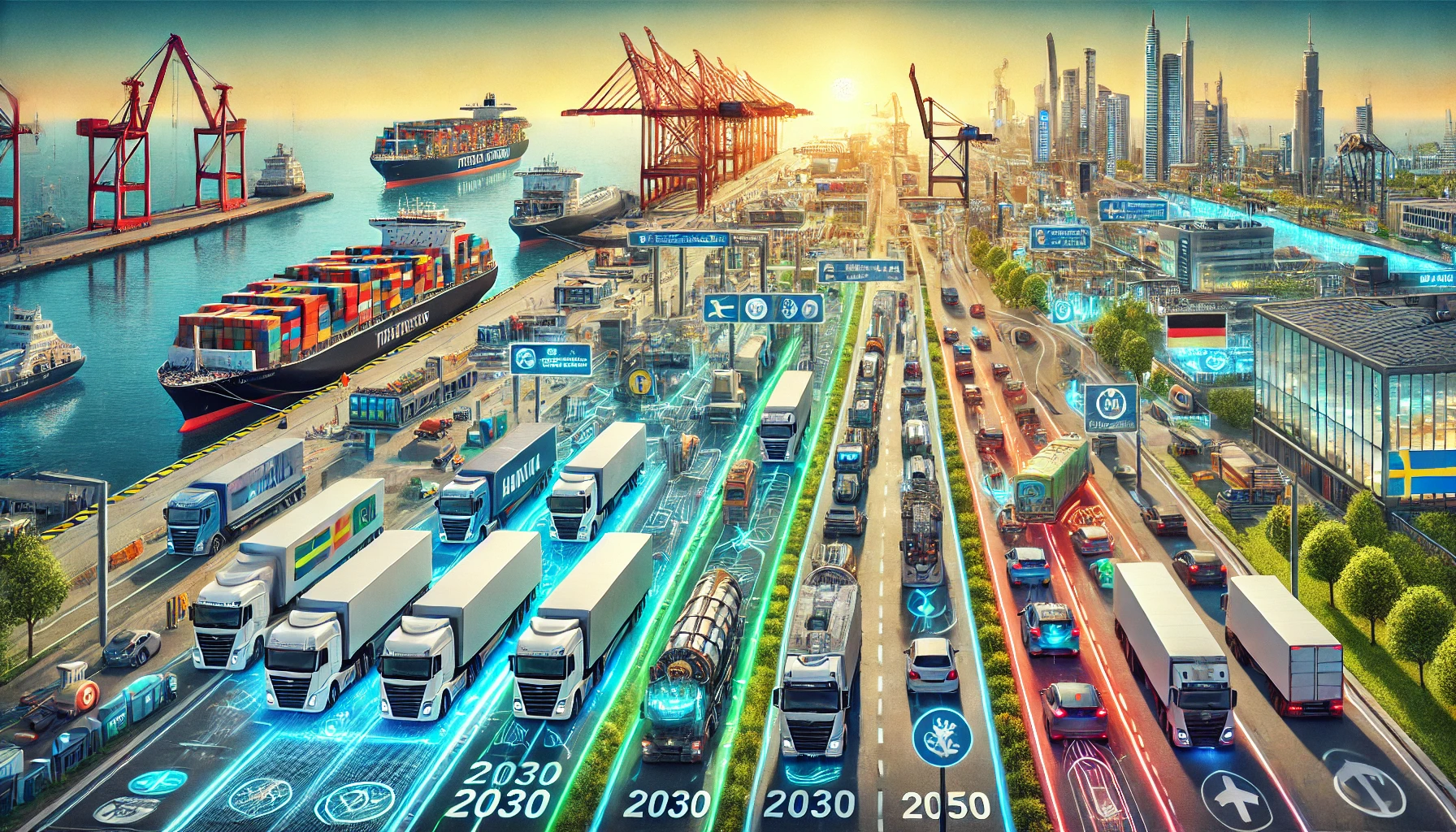Port of Trelleborg is a key transit hub for trucks in Northern Europe and wanted to predict the future trend in renewable energy truck fuels. The aim is to better plan for the adaptation of greener and more diverse energy sources while supporting international freight transport needs.
Currently, Diesel, due its efficiency and cost, is the dominant fuel for trucks. Electric and hydrogen powered options are still emerging. Most trucks that use the Port of Trelleborg come from countries that are slower in the adoption of new technologies. E.g.: Poland, Czech Republic and Romania. They contribute 70 percent of trucks at Port of Trelleborg.
Shifting to greener fuel options such as electricity or hydrogen is slow due to the high cost of infrastructure, varying national policies, and limited availability of charging stations and hydrogen refueling points.
For the 2030 vision, Disel will still be the major source of fuel for trucks in Trelleborg, with an estimated 90 percent share. Only 4 percent of vehicles are expected to run on electricity, and 1 percent on hydrogen.
For the 2050 projections, a broad mix of fuels is expected. Including 30 percent electricity, 8 percent hydrogen, and 10 percent gas-powered trucks. Diesel use will decline but still account for half of all vehicles.
Electric trucks, biofuels like HVO100 (renewable Diesel), and hydrogen fuel cell vehicles are seen as transitional or future solutions. However, barriers like insufficient energy infrastructure and high costs must be overcome.
What also needs to be considered in the future fuel distribution for the Port of Trelleborg, is the fact that trucks from developed countries often cycle into less-developed markets after they are written off. This lifecycle means that older trucks dominate fleets in Eastern Europe and slow down overall transition in renewable fuels in truck transportation.
Public demand, incentives for greener fuels, and technological advances will push the transition. Policies like the EU's "Fit for 55" on the other hand aim to reduce emissions significantly by 2030. When looking at Port of Trelleborg and the renewable energy technologies used in international freight transport, Sweden leads in adopting greener technologies, while Eastern Europe lags. This imbalance affects the pace of change at Trelleborg.
For 2030, Diesel will remain the dominant fuel with only a small growth in alternative fuels. The infrastructure gap will not be closed by 2030.
By 2050, Diesel use drops to 50 percent. Electric trucks then make up 30 percent, hydrogen 8 percent and gas 10 percent. Hydrogen trucks are expected to emerge as viable long-distance freight transport option. Battery-electric trucks will improve in their range and support regional and some long-distance applications.
Therefore, Trelleborg must prepare for diverse fueling needs. Including renewable energy fuels and charging stations. The proactive support of cleaner technologies could attract business from environmentally conscious companies. Corporate Social Responsibility is becoming more and more important, and it becomes part of the whole supply chain needs. It is therefore a potential market for any (transit) port. For this the collaboration with energy providers and policy makers is critical. However, it is also a point that was identified in other pilots and project partner activities.
Picture generated with ‘Create Images For Me’ AI

A futuristic depiction of the Port of Trelleborg showcasing the transition in heavy transport fuel use from 2030 to 2050. The left side (2030) includes mostly diesel-powered trucks with a few electric and hydrogen vehicles. Infrastructure like electric charging stations and hydrogen refueling points are under construction. The right side (2050) displays a more advanced and diversified mix of fuels with electric and hydrogen trucks dominating, minimal diesel presence, and advanced infrastructure like solar panels and electric roads. The port background features ferries, cranes, and international signage reflecting connections with Poland, Sweden, and Germany. Vibrant, detailed, and futuristic art style.